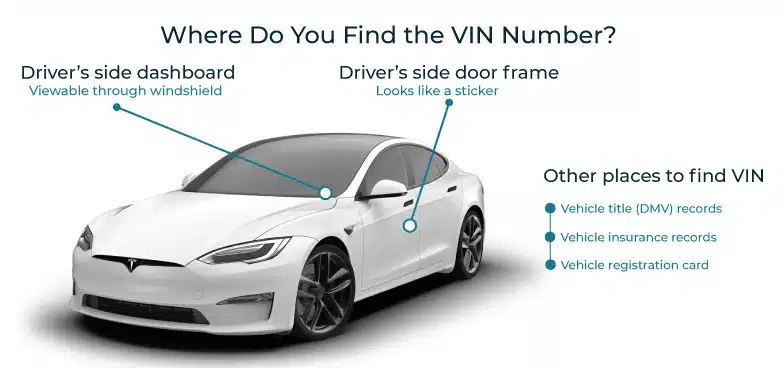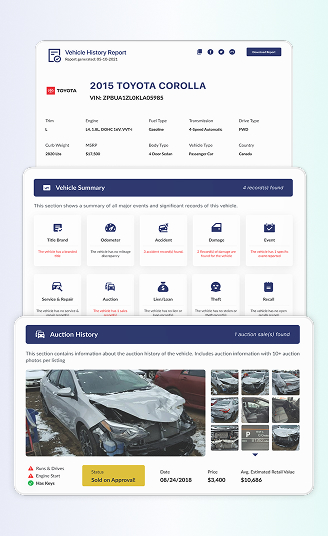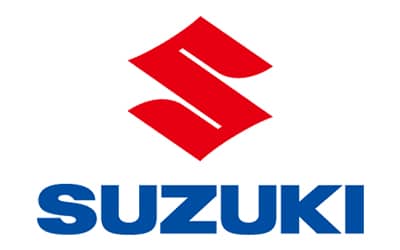
Suzuki Recall Check
Use Detailed Vehicle History to spot open Suzuki recalls by VIN or license plate. See recall dates, components, and remedy info in one place. Drive smarter, protect resale value, and take action with a certified dealer when repairs are available.
What is a Suzuki Recall?
Suzuki is a Japanese manufacturer known for nimble, efficient small cars like the Swift and Jimny, rugged SUVs such as the Vitara, and iconic motorcycles including the GSX-R line. Globally, Suzuki built its reputation on reliability, value, and go-anywhere practicality. But no brand is completely free from defects discovered after sale.
In plain terms, a Suzuki recall is a safety-related manufacturer action, validated or listed by the National Highway Traffic Safety Administration (NHTSA), where Suzuki contacts owners and fixes the defect at no charge through its dealer network.
Why You Should Check the Suzuki Recall History?
Running a Suzuki Recall Check helps you spot safety issues before you buy or drive, whether it’s a Swift, Jimny, or a classic Sidekick. Use it to verify open recalls, remedies, and dealer completion status so you can negotiate confidently or plan repairs. Below are some other reasons why you should check the Suzuki recall:
Avoid Unsafe Suzuki
A Suzuki recall flags non-compliance or safety defects that may endanger drivers, passengers, or others on the road. Use a Suzuki Recall Check by VIN to confirm open campaigns and claim free remedies before small issues become big problems.
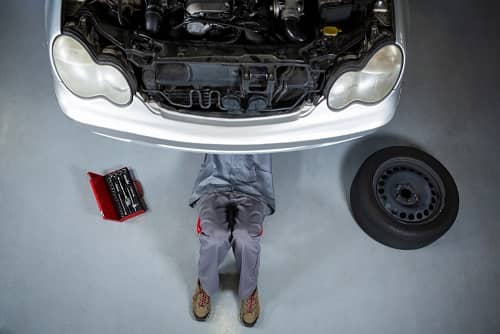

Compliance
Buying a Suzuki with an outstanding recall can mean the vehicle isn’t compliant with safety standards, which may complicate title transfer, insurance claims, and future sale. Check Suzuki’s recall history and claim free manufacturer fixes to stay protected.
Check Common Safety-Related Issues
Checking your Suzuki recall history is essential for uncovering safety issues like airbags, power steering, potential fire risks from electrical shorts, and faulty transmissions. Hidden defects may not show immediately, but can lead to serious danger if ignored. A Suzuki recall check keeps you safe, compliant, and confident every time you drive.

How to Run Suzuki Recalls?
Get the Suzuki recalls report in under a minute by following these simple steps below.

Locate Your Suzuki VIN
You'll need your Vehicle Identification Number (VIN). You can find the Suzuki VIN on the dashboard on the driver’s side of the windshield. You may also find it on the driver’s door jamb. For motorcycles and ATVs the it’s often located near the steering head or on the frame rail. Our lookup service works on any type of Suzuki, classic or current.


Fill in the Form
Start your Suzuki recall check now by entering your Suzuki VIN in the form above. No VIN available? Just enter your license plate number and we’ll generate your recall report instantly.


Receive Your Suzuki Recall Report
Wait for a few seconds for the Suzuki recalls report to be generated. Once it's finished, you can get the report on the recalls.
What is on the Suzuki Recall Check?
In the Detailed Vehicle History, a Suzuki recall check shows detailed information about safety recalls affecting your vehicle. Each record outlines when the recall was announced, which component is impacted, and what action you should take. Read further to see the detailed breakdown:
- Date of recalls: Indicates when Suzuki filed the campaign and NHTSA posted it, helping you verify timeliness.
- Affected Component: Identifies the impacted Suzuki component to explain the defect and the no-cost repair you’ll receive.
- Consequences: Highlights how an unresolved Suzuki defect can compromise systems and increase the chance of injury or expensive repairs
- Next step for the affected Suzuki: Check if your Suzuki appears in the recall, then book the free dealer repair. A full Vehicle Report shows past recalls and current repair status.
A Suzuki vehicle history report also includes accident history, lien/loan records, theft records, mileage records, and more. The full breakdown is listed below:

Accident History
Wonder if your Suzuki has ever been in an accident? Discover all accident records and the severity of damages with a detailed vehicle history report.
Lien/Loan records
This shows you, if your desired Suzuki has no lien or loan. You shouldn’t buy the Suzuki, which can cause you trouble in the future.
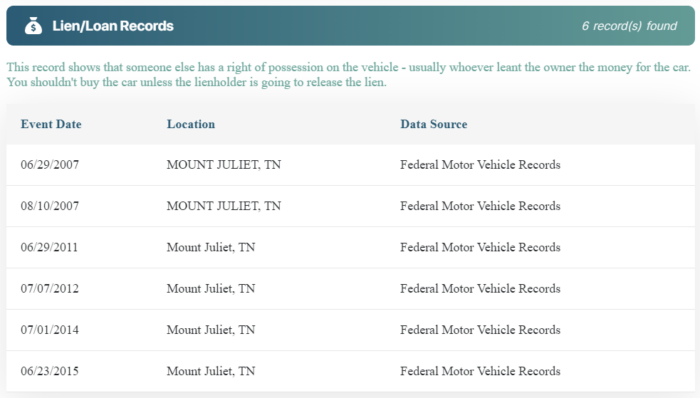

Theft Records
A Suzuki history report reveals theft reports and recovery status. Verify before purchase to prevent legal trouble, impound risk, title delays, and costly surprises.
Mileage records
See each reported Suzuki odometer reading by date. Sudden drops can indicate rollback; steady growth suggests normal use and helps estimate wear, service needs, and fair pricing.


Ownership Records
Track first purchase dates, ownership durations, and states lived in. Multiple owners or short tenures can suggest heavier use; longer holds may indicate steadier care.
Title Brand Check
A Suzuki vehicle history flags dangerous brands like salvage, rebuilt, flood, fire, and lemon. Protect registration, insurance, and resale value by verifying title status in minutes.
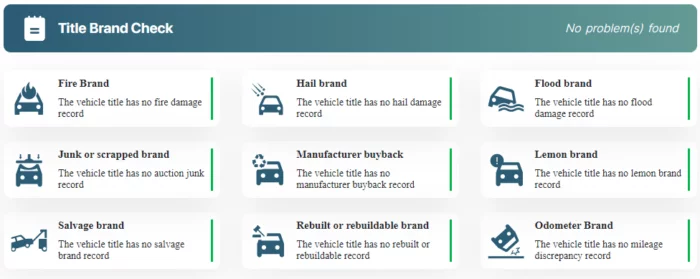
Common Issues Leading to the Suzuki Recall
Suzuki vehicles have faced several recalls due to safety and reliability concerns. Common issues include the fuel-hose abrasion, front brake master cylinder defect, rear-tire cracking, and more.
Below are some of the causes behind the Suzuki recall notices.
Fuel & Fire Hazards
Burgman 400 fuel-hose abrasion
During assembly, the metal pipe on the Burgman 400’s fuel-supply hose could be bent just enough that the hose rubs the vapor hose. Over time, abrasion can pierce the supply hose and leak fuel, an obvious fire Hazard.
Dealers install an updated feed hose and replace related components at no cost; plan roughly 90 minutes for the visit as a remedy.
Brake System Hazards
Hayabusa front brake master cylinder defect
Suzuki has recalled certain 2022–2024 Hayabusa (GSX1300R) motorcycles after discovering a defect in the front brake master cylinder. Deposits from the reservoir cap/diaphragm can swell rubber parts and partially block the tiny return port, making the lever feel “slow” and increasing stopping distance, a serious crash risk.
The campaign launched in late 2024 (24V-769), and Suzuki’s customer letters went out in March 2025. Dealers replace the master-cylinder body and reservoir diaphragm, bleed the system, and return the bike to spec at no cost.
Tires, Handling & Stability
V-Strom 800DE rear-tire cracking
On some 2023–2024 V-Strom 800DE units, the rear tire was built with too little rubber at the tread base. Heat and load can turn small cracks into chunking or tread separation, reducing grip and control. NHTSA opened campaign 24V-535 in 2024, and Suzuki mailed owner letters on July 25, 2024. Dealers will replace the rear tire with a revised spec and verify your wheel is safe at no charge.
Lighting/Visibility
The headlight beam is too bright
Suzuki issued a safety recall after discovering the upper headlight beam is too bright on certain bikes, exceeding FMVSS 108, due to potentially blinding riders or oncoming drivers. The campaign covers 2020–2025 V-Strom 1050 (DL1050) and 2020 & 2024 GSX-S1000S/Katana. Dealers will replace the entire headlamp assembly free of charge.
Other Notable Issues
Power steering assist loss
The 2012–2013 Suzuki SX4 had a problem with its power-steering pump. In cold weather, a part inside the pump could get stuck, causing the steering to suddenly stop working. This makes it harder to control the car at low speeds, which could lead to accidents.
To fix this, Suzuki offered a free repair where they replace the pump and the fluid. This recall was reported by safety officials in 2018, and Suzuki sent out repair notices in late 2018 and 2019. You can get the repair done for free at authorized service centers.
Air-bag/seat-sensor problems
Suzuki recalled certain Grand Vitara (2006–2013) and Kizashi (2010–2013) for an airbag/seat sensor problem. On leather-seat vehicles, the front passenger leather can shrink, pressing on the occupant classification system (OCS) sensor mat. That can misread who’s in the seat (adult vs. child) and deploy the air bag when it shouldn’t, or suppress it when it should deploy.
Understanding the Suzuki Recall Process
The NHTSA begins the recall process by investigating reported issues. If a defect is found, the manufacturer must issue a recall. See the steps of their process below
Report the Problem
If your Suzuki shows a safety issue, file a complaint with NHTSA. Your report goes into the national database; when many owners report the same fault, NHTSA can open an investigation and push for a recall.
Investigation
Once a complaint is submitted, the NHTSA follows a multi-step process to determine whether a recall is necessary.
- Screening: Complaints from vehicle owners are examined for credibility and evidence to decide if further investigation is justified
- Analysis: Defect petitions are reviewed in detail. If denied, the decision and reasoning are publicly posted in the Federal Register.
- Investigate the Issues: When Suzuki’s safety concerns are confirmed, NHTSA launches a formal investigation, ending in either no defect or a recall.
- Recall Management: NHTSA ensures owners are notified and monitors repair completion rates.
Recalls
A Suzuki safety recall means the manufacturer must notify owners and correct the defect. Ralls are issued when a Suzuki vehicle or parts is unsafe or out of regulation. Repairs are provided free, depending on the case, that can include repair, replacement, refund, or buyback.
How Suzuki Vehicle Recalls Are Handled?
When a safety issue is found on a Suzuki, three teams step in: Suzuki (the manufacturer), NHTSA, and you. Suzuki reports the defect, NHTSA oversees the process, and you schedule the free repair after a Suzuki Recall Check.
Manufacturer’s Role
A recall is Suzuki’s formal promise to correct a safety defect at no cost. After identifying a risk, Suzuki files details with NHTSA, lists affected VINs, alerts owners, and supplies parts and instructions to dealers. Repairs are free, regardless of warranty. Do a Suzuki Recall Check to verify your status, schedule the fix, and keep records for insurance or resale. If you notice a hazard before any recall is announced, report it to NHTSA. Owner reports help trigger investigations and faster fixes.
NHTSA’s Role
NHTSA sets the safety rules, audits defect reports, and makes sure Suzuki follows through. When a risk is found, NHTSA reviews the data, posts the campaign to its Recalls database, and monitors owner notifications and dealer repairs. You can search your VIN, see official documents, and file complaints that help trigger investigations.
Your Role as the Vehicle Owner
Your role is the spark that turns a Suzuki recall into a solved problem. First, run a Suzuki Recall Check to confirm if your Suzuki is affected. Keep your mailing and email details current so notices reach you. Read the remedy, book the free dealer repair, and bring the letter or campaign number.
Keep records, including the recall number, invoice, and any interim repair notes. If the dealer lacks parts, ask for updates and check the status of your vehicle. Still experiencing the defect, or no recall shows for your symptoms? Submit a safety complaint to NHTSA.
Get Suzuki Window Sticker by VIN
Upgrade to the Suzuki window sticker to see the exact build: trim level, option codes, packages, safety equipment, fuel-economy ratings, warranty snapshots, and original MSRP.
Validate the seller’s description, compare value, and spot costly omissions before you buy. It’s the cleanest way to prove specs for financing, insurance, or future resale.
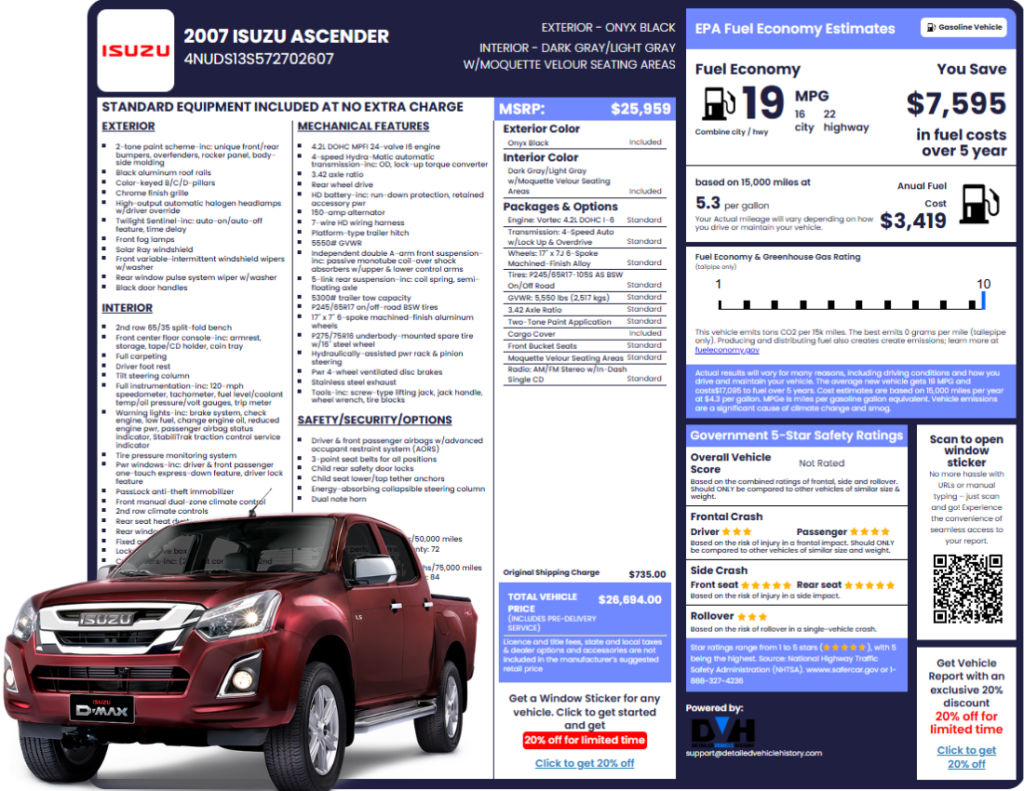
Why Use Detailed Vehicle History to Check Suzuki Recall?
A Detailed Vehicle History gives you context that others miss. Our report merges recall details and remedy guidance with title brands, lien/loan status, mileage rollbacks, prior ownership, accident/damage records, and even auction photos.
Everything lines up in one place, so you can verify claims, negotiate better, and avoid costly surprises. Enter your VIN or license plate number now, and turn uncertainty into leverage before you sign.
Recall Check For Others Manufacturers
FAQ about Suzuki Recalls Check
Is it safe to drive my Suzuki if it has an open recall?
Not safe. Recalls flag defects that can injure or reduce protection. Check your Suzuki’s VIN, follow any usage restrictions, and schedule the free repair at an authorized dealer without delay. That’s the fastest path back to safe driving.
Are Suzuki recall repairs free even if my warranty is over?
Yes. Recall fixes aren’t warranty work. Federal rules require free remedies up to 15 years after the first sale. Past that mark, coverage becomes voluntary (case-by-case). Recalls themselves don’t expire, but free repair obligations can. Some issues may be handled via customer satisfaction campaigns or warranty enhancements (these can expire).
Can I take my Suzuki to any authorized dealer for a recall repair?
Yes. Any authorized Suzuki dealer can perform recall repairs at no cost.
How long do Suzuki recall repairs take, and how are parts prioritized?
Time varies by campaign and parts: some jobs finish in under two hours; others need more shop time. When parts aren’t ready, you’ll get an interim letter and a follow-up when stock arrives. Dealers prioritize safety-critical recalls and VINs with usage restrictions.
Can a dealership refuse to perform a Suzuki recall repair or charge me?
Suzuki safety recall repairs must be free by law. If a dealer can’t fix your car due to parts, salvage status, or modifications, try another dealer, contact Suzuki, or file a complaint with NHTSA.
Can I get reimbursed if I already paid for a repair covered by a Suzuki recall?
Usually yes. If you paid to fix a problem later covered by a Suzuki safety recall, you can request reimbursement by submitting receipts to an authorized dealer or per the recall letter.
Note: the federal free-repair duty runs 15 years from first sale; beyond that, reimbursement may not apply.

